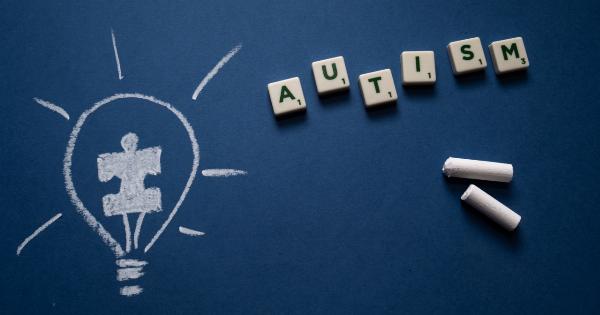Dyslexia is a common learning disorder that affects the way individuals process and interpret information.
It is estimated that about 10% of the population has some form of dyslexia, making it crucial to recognize the early signs in order to provide appropriate interventions and support. While dyslexia cannot be completely cured, early intervention can significantly improve academic and social outcomes for individuals with dyslexia. In this article, we will explore some of the early signs of dyslexia and how to identify them.
1. Delayed speech development
One of the earliest signs of dyslexia is delayed speech development. Children with dyslexia may exhibit slower language development compared to their peers.
They might struggle to pronounce certain sounds, have difficulty in finding the right words, or experience challenges with rhyming. Persistent speech delays even after the age of three should be carefully monitored and evaluated.
2. Difficulty in learning the alphabet
Children with dyslexia often struggle with learning the alphabet. They may find it challenging to recognize or remember the names and sounds of letters.
While many children may initially mix up letters, those with dyslexia have persistent difficulties in mastering letter recognition and letter-sound associations.
3. Poor phonological awareness
Phonological awareness refers to the ability to identify and manipulate the sounds in words.
Children with dyslexia have difficulty in segmenting words into individual sounds (such as identifying the separate sounds in the word “cat”) or blending sounds to form words. They may struggle to rhyme words or identify syllables in words.
4. Problems with reading and decoding
One of the hallmark signs of dyslexia is difficulty in reading and decoding words. Children with dyslexia may read slowly, struggle to decode unfamiliar words, or have difficulty understanding what they read.
They may skip words or lines, substitute words, or guess at words based on context. Their reading comprehension may also be significantly impaired.
5. Reversing letters and numbers
Another common sign of dyslexia is letter and number reversals. Children with dyslexia may frequently reverse or transpose letters or numbers when writing or reading.
For example, they might write or read “b” instead of “d” or “12” instead of “21.” While occasional reversals are common in early childhood, persistent reversals should be monitored closely.
6. Poor spelling
Spelling difficulties are often observed in individuals with dyslexia. They may have trouble memorizing spelling patterns, struggle to recall the correct order of letters in words, or exhibit inconsistent and unconventional spelling.
Despite effort and practice, their spelling skills may not progress at the same rate as their peers.
7. Difficulties with handwriting
Children with dyslexia may also experience challenges with handwriting. They may have poor letter formation, struggle with sizing and spacing, or exhibit illegible handwriting.
These difficulties can further hinder their ability to express their thoughts and ideas on paper.
8. Trouble with sequencing and organization
Dyslexia can also impact a child’s ability to remember and organize information sequentially. They may struggle with organizing their thoughts or tasks in a logical order.
Following multi-step directions or remembering the sequence of events in a story may pose significant challenges.
9. Weak short-term memory
Individuals with dyslexia often have weaker short-term memory, which affects their ability to remember and retain information temporarily.
For example, they may have difficulty remembering sight words, recalling information immediately after reading, or following a series of instructions. This can impact both academic and daily life activities.
10. Low self-esteem and avoidance of reading
Children with dyslexia often experience frustration and low self-esteem due to their difficulties with reading and writing.
They may begin to avoid reading activities, show resistance to engage in tasks involving reading or writing, or express negative attitudes towards school. It is important to address these emotional and psychological aspects alongside academic interventions.
Conclusion
Recognizing the early signs of dyslexia is crucial for early intervention and support.
If you notice any of these signs in your child or a student, it is important to seek professional evaluation and guidance from educators and specialists trained in supporting individuals with dyslexia. Remember, early intervention can make a significant difference in managing dyslexia and improving outcomes for those affected by this learning disorder.






























